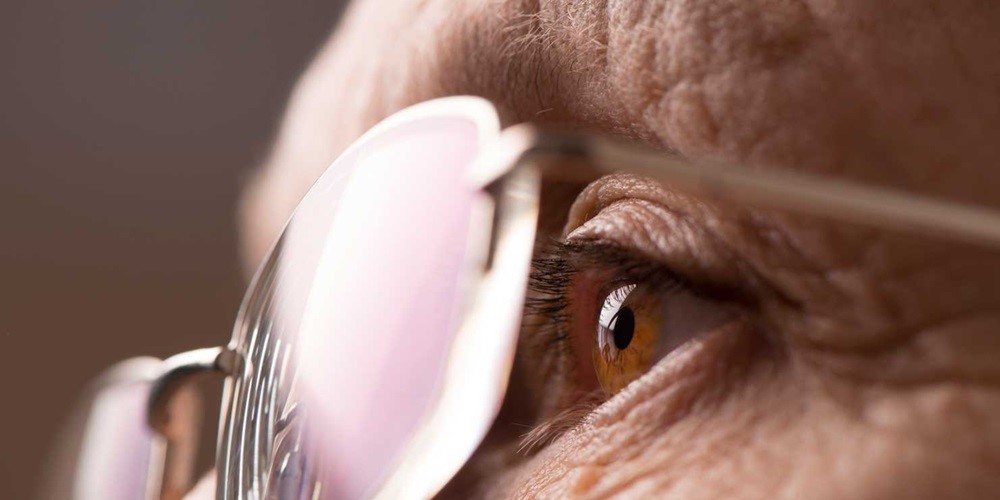Diabetic retinopathy can occur in two forms: early and advanced diabetic retinopathy. In the early stage (initial retinopathy), transparent fluid leaks from small blood vessels in the retina cause swelling in surrounding tissues. Abnormal vessels can lead to bleeding or leakage of fat and protein, creating deposits. If fluid accumulates in the macula, it results in blurred and reduced vision. If these findings occur outside the macula, there may be no symptoms.
In early retinopathy, there is usually no significant impact on vision. In 80% of patients, no progression is observed at this stage. However, early retinopathy serves as a warning sign for the development of the more severe form, advanced retinopathy.
Advanced diabetic retinopathy (Proliferative)
Advanced diabetic retinopathy is a more progressed stage of the disease, where abnormal new blood vessels grow into the retina and vitreous (the clear gel-like substance inside the eye). These new vessels can bleed into the vitreous, blocking light from reaching the retina and causing blurred vision. Fibrous tissue formed along with the new vessels can grow, expand, and contract, potentially detaching the retina from the underlying structures (retinal detachment).
The risk of advanced diabetic retinopathy increases with the duration of diabetes and occurs in 5% of diabetic patients. Without treatment, it can lead to blindness.
What causes diabetic retinopathy?
The exact cause of diabetic retinopathy is not fully understood. However, it is known that diabetes affects small blood vessels throughout the body, including the retina. Unfortunately, the development of diabetic retinopathy cannot be prevented, but it can be slowed and delayed.
What are the symptoms of diabetic retinopathy?
In early diabetic retinopathy, patients may experience slowly developing blurred vision, but sudden vision loss is rare. Since there are no visible symptoms such as pain, redness, or discharge, retinal changes may go unnoticed without an eye examination.
In advanced diabetic retinopathy, bleeding can cause blurred vision or sudden vision loss. Fibrous tissue formation pulling on the retina can also lead to visual distortions and blurriness. If these changes occur in the peripheral retina, they may produce no symptoms.
How is diabetic retinopathy diagnosed?
A well-conducted eye examination is the most effective way to prevent the progression of diabetic retinopathy. Devices used to visualize the retina can detect the disease. If diabetic retinopathy is identified, fluorescein angiography can evaluate leaking blood vessels. During this test, sequential photographs of the retina are taken as the dye circulates through the retinal vessels. Optical coherence tomography, a fast and harmless test, can detect swelling in the visual center. In some cases, ultrasonography may be used to detect retinal detachment.
Is diabetic retinopathy treatable? How is it treated?
Treatment for diabetic retinopathy depends on the location and severity of retinal damage. If retinopathy is in the peripheral retina, close monitoring may suffice, but if the macula is affected, intravitreal injections are often necessary.
In early diabetic retinopathy, injection therapy can be used to seal leaking vessels. Although the disease cannot be completely eliminated, this can delay the progression to advanced diabetic retinopathy and minimize vision loss. In advanced stages, injections and laser treatments are applied to prevent abnormal vessel growth.
Injection and laser procedures can be performed in outpatient units under clinic conditions.
PREVENTION IS THE BEST MEDICINE…
Early diagnosis and treatment are crucial in preventing disease progression and serious vision damage. Even without symptoms, diabetic patients should undergo regular eye examinations as recommended by their doctor. Non-diabetic individuals should also have routine eye exams to detect potential diabetes or other conditions. With careful monitoring, treatment for diabetic retinopathy can begin before vision is affected.
If you experience symptoms of diabetic retinopathy or vision problems, a complete eye examination is necessary. If you have diabetes, it is recommended to have at least one dilated (pupil-enlarged) eye exam per year for life.

